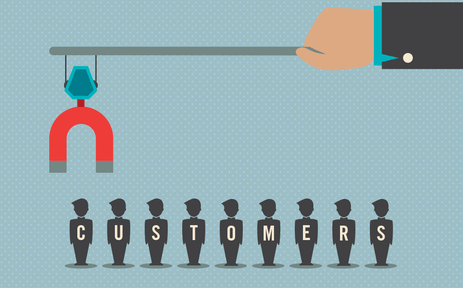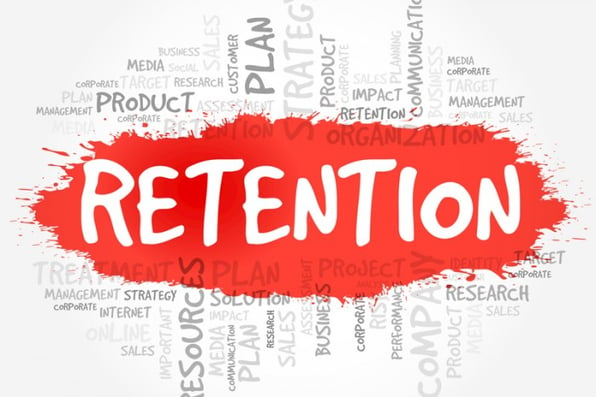The Top Ten Benefits of Customer Retention
It’s hard to believe that so many companies still devote most of their resources to new business. Don’t get us wrong, a new customer is always a worthy pursuit.
But this laser focus on the present often comes at the expense of the future.
US companies spend $50 billion yearly on loyalty programs.
Meanwhile, businesses sink hundreds of billions of dollars into advertising annually. In 2019 alone, $240 billion dollars were spent in the US. And while 2020 was (understandably) atypical, economic recovery in 2021 is expected to bring growth back to customer spend AND business advertising spend.
We get it. New business makes the CEO and shareholders happy. It earns parties in the breakroom and high fives in the boardroom.
Customer retention may not have the same sexy reputation, but it's definitely more profitable. Even better, profits are just one of the positive aspects of retention and loyalty.
Let's go over the top ten benefits of retention, shall we?
1. Retention is Cheaper than Acquisition
While the old adage about "it costs five times as much to acquire a new customer" may not be accurate in every case, the basic principle is spot on: it’s more cost-effective to keep someone in the fold than to bring in new customers.
Even still, if it’s data you want, there has been plenty of research into acquisition vs retention, and every one of them has come back with the economics favoring retention as the more economically viable focus.
One caveat though: retention is cheaper than acquisition, but it isn’t necessarily easier.
2. Loyal Customers are More Profitable
 Not only is loyalty cheaper, it has better returns. According to research, engaged consumers buy 90% more frequently, spend 60% more per transaction and are five times more likely to indicate it is the only brand they would purchase in the future. On average, they’re delivering 23% more revenue and profitability over the average customer.
Not only is loyalty cheaper, it has better returns. According to research, engaged consumers buy 90% more frequently, spend 60% more per transaction and are five times more likely to indicate it is the only brand they would purchase in the future. On average, they’re delivering 23% more revenue and profitability over the average customer.
While loyal customers are more profitable, don’t take their loyalty for granted. They’ll be more open to price increases, but be cautious not to raise prices simply to see how long they’ll stick around. Lifetime revenue is the end goal, not just today’s revenue.
Consider the flipside: “Actively disengaged” customers (people who oppose the brand and may be actively spreading that opinion) can cost a brand 13% of its revenue.
3. Your Brand Will Stand Out from the Crowd
Put your consumer hat on, and consider how many brands you interact with that actually seem to value your patronage.
You can probably only think of one or two.
Most brands focus on acquisition, which makes the retention-centric among us stand out even more.
People see around 10,000 marketing exposures a day, but only engage with a few of them. The ones that earn continual engagement are those with whom they feel an emotional connection with on some level.
Forget a unique selling proposition; the best brands have a unique retention proposition.
4. You’ll Earn More Word of Mouth Referrals
Your loyal customers will be your best source of new business.
Despite all the efforts into online and mobile marketing and social media, people are still most strongly influenced by referrals from friends and family.
Millennials in particular will spread the word of a brand’s exploits: 90% share their brand preferences online.
5. Engaged Customers Provide More Feedback
Feedback is critical to the success of any business.
Customers who provide feedback are often willing to give brands the benefit of the doubt. They’re telling you how to earn their business repeatedly. As research has shown, people who have complained and seen their issue resolved are 84% less likely to decrease their spend.
Need help dealing with the customers who are providing nasty feedback? Read this.
6. Customers Will Explore Your Brand
That’s a nice way of saying you’ll be able to sell them more stuff. Once a brand has proven itself with one product or service, customers are six times more likely to say they would try a new product or service from the brand as soon as it becomes available.
That’s not just valuable for sales, but these folks can be utilized to help with #5 above as beta testers - a critical element in product development.
7. Loyal Customers are More Forgiving
An Accenture study states over $1.6 trillion is lost each year due to customers bailing after a poor service experience. We've gone so far as to claim that it's the top reason people will ditch a brand. But customers who consider themselves loyal will let some misdeeds slide - just don't let it happen too often.
8. Customers Will Welcome Your Marketing
No one likes being marketed to.
Except for loyal customers!
Those folks are four times more likely to say they “appreciate when this brand reaches out to me” and seven times more likely to “always respond to this brand’s promotional offers.”
9. You Earn Wiggle Room to Try New Things
Loyalty is fickle, so too many changes could chase people away. But once you’ve established a core base of proven customers, your brand can expand its boundaries. Maybe it’s new messaging or a new product line, or even a new logo. The bottom line is as long as you maintain the basic premises that keep people in your corner, they’ll stick with you through thin and thin.
In fact, some of them will be excited to see what you can do. Existing customers are 50% more likely to try new products, according to a study.
10. It's Better for Employee Health
Customer retention is basically relationship building. Good relationships make life better for everyone. They’re mutually beneficial. Sales, on the other hand, are transactional. They’re very price-sensitive and come with a lot of “What have you done for me lately?” attachments.
Meeting regular quotas that rely on converting strangers into revenue is not for the fainthearted.
To a business, being relational makes everything easier. Customers are less likely to fly off the handle at the first sign of distress. That protects your revenue and makes life easier on your employees - who play a huge role in customer loyalty.
To Increase Retention, Increase Engagement
 By now, you’re probably thinking to yourself: “I’m sold! How do I get me some of that retention?”
By now, you’re probably thinking to yourself: “I’m sold! How do I get me some of that retention?”
We’re so glad you asked. Because at Access Development, retention is what we live and breathe: customer retention, member retention, employee retention, you name it.
And we know that convincing customers to return again and again takes a concentrated effort to earn their trust, and keep them actively engaged. That’s why so many businesses are investing in quality loyalty programs and searching for the best discount programs.
We have hundreds of articles on this very blog dedicated to teaching businesses how to inspire loyalty, engage your constituents and of course, retain more of your audience year after year. Learn more of our favorite engagement strategies in these recent articles:
- Keep them on the fastest path to loyalty by marketing using the ladder of engagement
- Set engagement-focused goals like: listen to your constituents, adapt continually, add value and more
- Show appreciation with any one of 40 free or inexpensive customer appreciation ideas
- Give your business the human touch with a higher standard of customer service
- Add benefits that provide real value; this guide can help you tell the difference
Top sum up, these ten benefits cover a gamut of profitable business activities: revenue generation, product development, marketing, customer feedback, branding, differentiation, and more. And each one of them is a natural byproduct of focusing on customer retention.
Rewards and loyalty programs, special promotions, discount programs, advanced CRM systems, even employee perks / lifestyle benefits are all ways you can actively invest in customer retention.
The most important thing is to not lose sight of your existing customers in pursuit of new ones. We promise, it’ll pay off.
(Magnet image courtesy of Brendan C)
Topics: customer roi, customer retention, customer incentive programs, discount program, customer loyalty, Discounts

Written by: Kendra Lusty














Share your Comment.